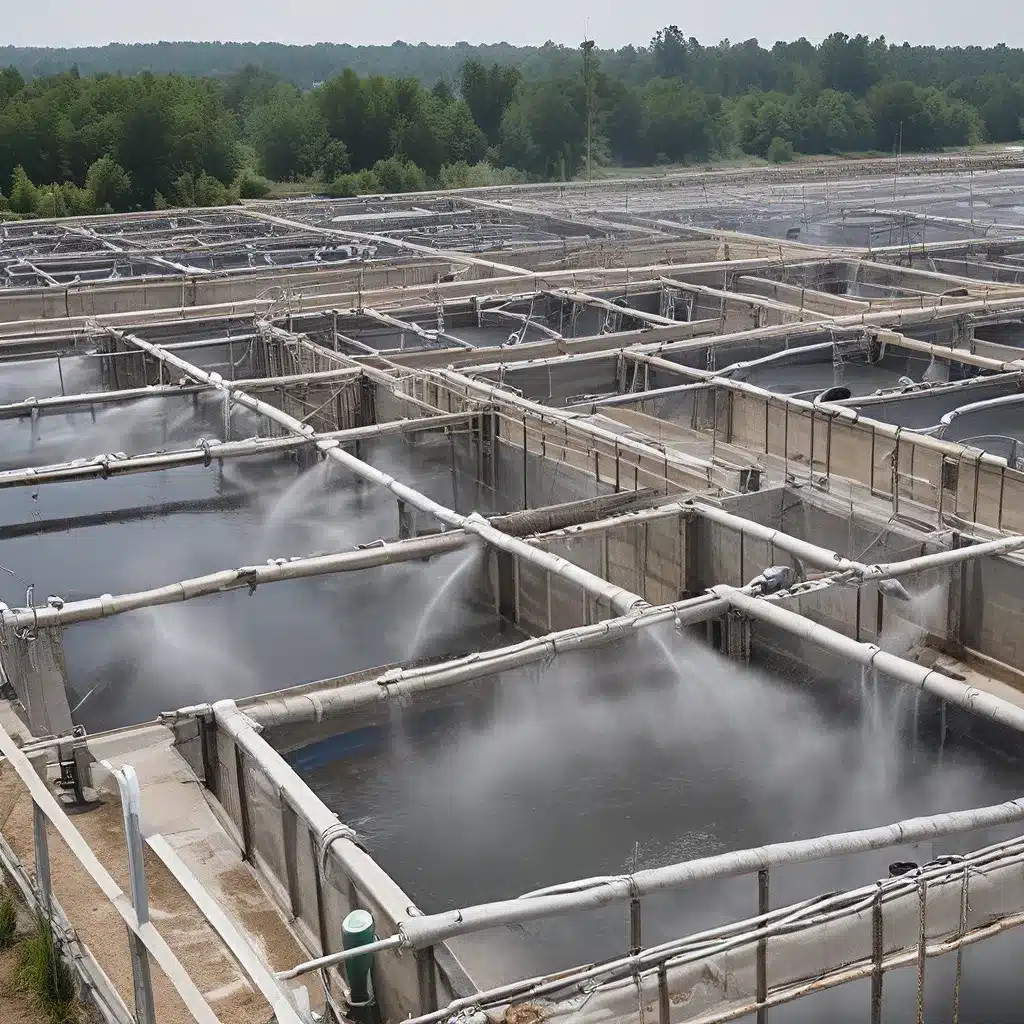
As someone who’s spent countless hours knee-deep in municipal wastewater, I can confidently say that the art of optimizing air quality in these facilities is no small feat. From the pungent odors wafting through the air to the potential health hazards lurking in the shadows, maintaining pristine air quality is a constant battle that wastewater treatment plant operators must wage.
Understanding the Challenges
Let’s start by acknowledging the elephant in the room – or shall I say, the methane in the air? Wastewater treatment plants are veritable hotbeds of air quality challenges, with a myriad of potential pollutants just waiting to be unleashed. From the release of hydrogen sulfide and volatile organic compounds (VOCs) during the treatment process to the fugitive emissions from aeration basins and sludge handling, the list of air quality culprits is as diverse as it is, well, stinky.
But it’s not just the odors that we need to worry about. Airborne pathogens, particulate matter, and even greenhouse gases can pose serious threats to the health and safety of plant workers and the surrounding community. And let’s not forget the potential for regulatory violations and hefty fines if these air quality issues are not addressed head-on.
Tackling the Odor Conundrum
One of the most pressing air quality concerns in wastewater treatment plants is the management of odors. These malodorous emissions can not only be a nuisance to nearby residents, but they can also be indicative of larger air quality problems lurking beneath the surface.
So, how do we tackle this olfactory nightmare? The key lies in a multifaceted approach that combines process optimization, targeted odor control technologies, and effective monitoring and reporting.
Process Optimization
By closely monitoring and optimizing the various stages of the wastewater treatment process, we can significantly reduce the generation of odorous compounds. This might involve adjusting aeration rates, improving solids handling, or enhancing biological processes to minimize the production of hydrogen sulfide and other volatile substances.
Odor Control Technologies
When process optimization alone isn’t enough, we can turn to a suite of advanced odor control technologies to keep those pungent emissions at bay. From chemical scrubbers and biofilters to thermal oxidizers and activated carbon systems, the options are diverse and can be tailored to the specific needs of each facility.
Monitoring and Reporting
Comprehensive air quality monitoring and robust reporting are essential for identifying and addressing air quality issues in wastewater treatment plants. By regularly tracking key parameters like hydrogen sulfide levels, particulate matter, and greenhouse gas emissions, we can proactively identify problem areas and implement targeted solutions.
Tackling Airborne Pathogens and Particulate Matter
While odors may be the most noticeable air quality challenge, they’re not the only ones we need to worry about. Airborne pathogens and particulate matter can pose serious health risks to plant workers and surrounding communities.
Pathogen Control
To mitigate the spread of airborne pathogens, we need to implement robust biosafety protocols and engineer our facilities to minimize the potential for aerosolization. This might involve installing high-efficiency particulate air (HEPA) filtration systems, implementing strict personal protective equipment (PPE) policies, and ensuring proper ventilation and air exchange throughout the plant.
Particulate Matter Management
Managing particulate matter in wastewater treatment plants can be a tricky proposition, as the nature and sources of these airborne pollutants can vary widely. From the fine dust generated during sludge handling to the mist from aeration basins, we need to be vigilant in our efforts to capture and contain these airborne particles.
One effective strategy is the use of fabric filters and scrubbers to remove particulate matter from the air before it can escape the facility. Additionally, maintaining proper enclosures and ensuring that dust-generating activities are conducted in well-ventilated areas can help to keep these airborne pollutants in check.
Greenhouse Gas Mitigation
As if odors, pathogens, and particulate matter weren’t enough, wastewater treatment plants are also significant contributors to greenhouse gas emissions, primarily in the form of methane and nitrous oxide. And with the growing emphasis on environmental sustainability and climate change mitigation, addressing these emissions is becoming an increasingly critical priority.
Optimizing Biological Processes
One of the key strategies for reducing greenhouse gas emissions from wastewater treatment plants is to optimize the biological processes involved in the treatment of organic matter. By enhancing the efficiency of aerobic and anaerobic digestion, we can minimize the production of methane and nitrous oxide, two potent greenhouse gases.
Capturing and Utilizing Biogas
Another powerful tool in our arsenal is the capture and utilization of biogas, a byproduct of the anaerobic digestion process. By harnessing this renewable energy source, we can not only reduce our greenhouse gas emissions but also generate valuable sources of heat and power for our facilities.
Implementing Energy-Efficient Technologies
Finally, we can’t forget the importance of implementing energy-efficient technologies and practices throughout our wastewater treatment plants. From upgrading to more efficient aeration systems to optimizing the use of renewable energy sources, every little bit of energy savings can contribute to a significant reduction in our carbon footprint.
Collaboration and Continuous Improvement
Optimizing air quality in wastewater treatment plants is not a one-and-done proposition. It’s an ongoing process of continuous improvement, where we must constantly adapt to new challenges, leverage emerging technologies, and collaborate with industry peers and regulatory agencies to stay ahead of the curve.
Inland Waters, for example, is a leading provider of water treatment and environmental services, with a deep understanding of the unique challenges facing wastewater treatment plants. By partnering with experts like Inland Waters, plant operators can tap into a wealth of knowledge, resources, and innovative solutions to tackle their most pressing air quality concerns.
Remember, the quest for clean air in wastewater treatment plants is an ever-evolving journey, but one that is essential for the health and well-being of our communities. So let’s roll up our sleeves, put on our thinking caps, and get to work – because the future of our air quality depends on it.


